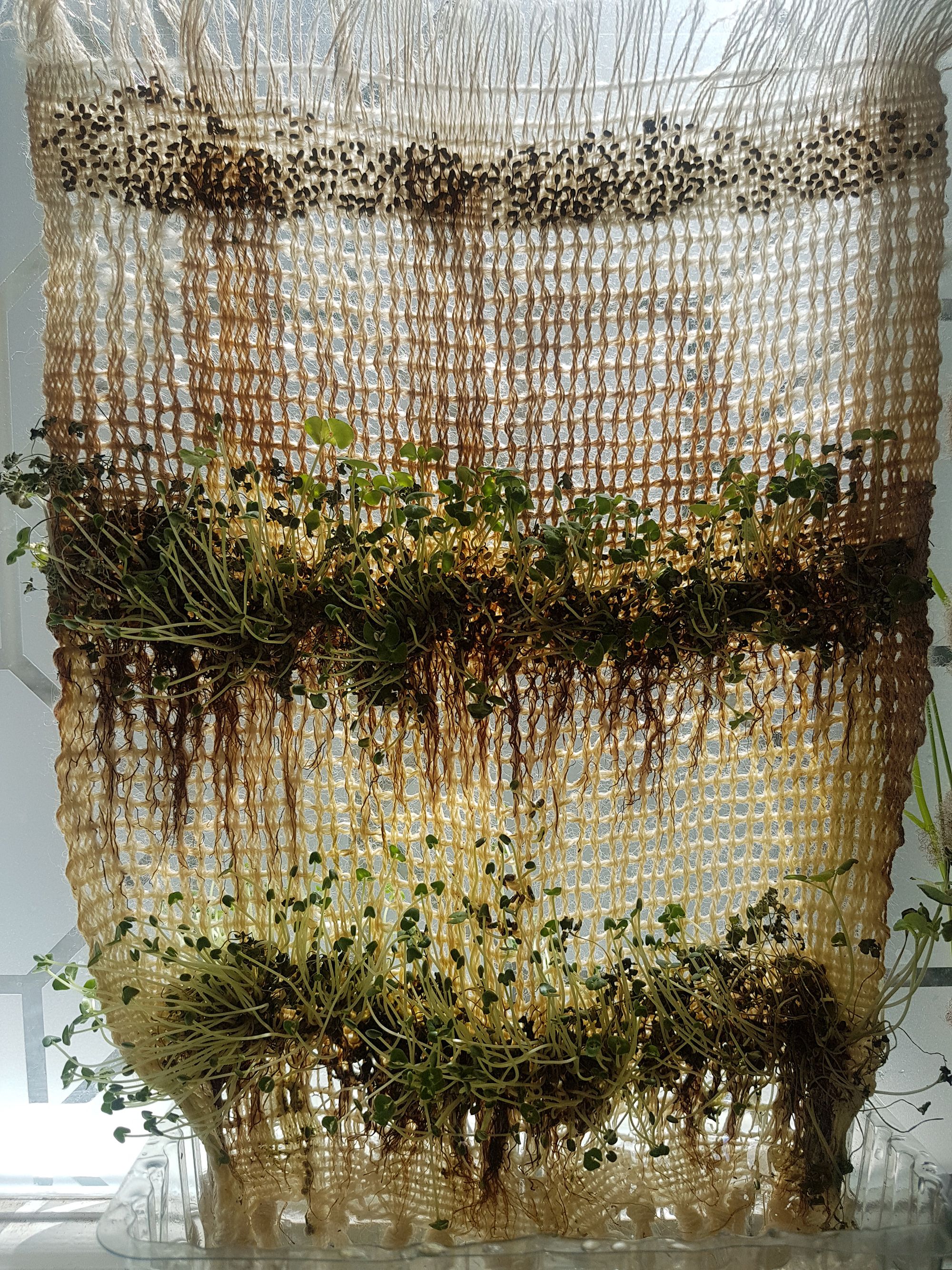
Seed fabric and compostable textiles: MA Textile Design graduate Apurva Srihari

- Written byGrizelda Kitching
- Published date 09 March 2021

Apurva Srihari, a textile designer and researcher, graduated from MA Textile Design in 2020. Apurva’s principles of circular design and sustainable textiles are clear throughout her practice.
Here we take a look back at Apurva’s UAL Showcase submission, titled Seed Fabric: The Eternal Value of an Ephemeral Cloth. The project explores the concept of compostable textiles through a sensory and visual experience.
Apurva, who is currently based in San Francisco, told us more about the project and tells us about her experience since graduating.

What were the inspirations behind your Graduate Showcase project?
Apurva:
My work creates an experience through textiles and lets one engage with it and be a part of a bigger ecological circle. My practice highlights the benefits of using wool, a sustainable and naturally intelligent fibre that has high nitrogen content, which means it provides nutrition to the soil and plants. Wool also contributes to a better indoor air quality.
The Eternal Value of an Ephemeral Cloth is an experimental journey that brings together seeds and textiles - two essential life elements which are rarely seen together.
The collection consists of a series of woven textiles created by embedding locally-sourced seeds in wool. It investigates various possibilities of the material, and the significance of engaging with the textile’s lifecycle. Additionally, through natural materials and unaltered colours, Seed Fabric outlines the ecological and psychological values associated with the material. Often when we buy clothing or other textile products we are pretty unaware where it has come from and where is will go.
I was curious to create a piece of textile that would enable users to engage, grow, compost and eventually, make the fabric a part of their surroundings rather of landfills. This would allow users to participate in the textile's lifecycle.

My final collection is divided into two series, which explains the the experimental journey of Seed Fabric.
The first part is inspired by a soil-to-soil approach, where the seeds are dormant in the fabric and can be activated when needed.
The second part of the collection depicts the concept of seeds as an expressive part of the fabric. This part was inspired b the global pandemic and me being in being in an enclosed space. I realised the importance of an indoor environment to one's mental well-being. This opened a whole new area of experimentations like green curtains to grow panels for interiors. The series explored biophilic design through textiles and depicts the fabric as an engaging, dynamic material whilst improving the indoor environment.

Can you tell us about how you adapted your practice due to the lockdown restrictions last year?
Specialising in weave, I believe my fellow weavers and knitters can empathise with how essential the machines are for our practice. The first few days of lockdown, therefore, were challenging and frustrating due to the limited materials available to me. This meant I could not continue with the ideas that I had planned earlier.
However, these limitations made me embrace ‘slow-making’ and enabled me to think of new ways of embedding seeds in fabric other than using the machines, leading to some interesting experimentations and outcomes. I also learnt how to draw and animate in order to depict the growth of the seeds on textiles.
Since I was unable to access my yarns at the college, I decided to look for waste fleece as a material for my work. I got two Alpaca fleece cardigans from Ally Bee, a knitwear designer in London. Since the cardigans were knitted loosely, they were of no use to her. I unravelled the knitting and used it to make the fabric and coincidently, the colours fit perfectly with the overall theme of my project. In addition to weaving on a frame loom, I used hand-spinning and a hand-knitting machine to make several samples of the Seed Fabric collection.

What was your experience of showing your work digitally as part of the UAL Graduate Showcase?
My experience of online showcase was definitely a bit challenging because textiles and materials are often better understood when felt by hands in an actual space especially for a research work which requires public presence and comments.
However, the new platform gave me the opportunity to move away from conventional materials and processes. I used animation, made hyper-lapse process videos, and digital illustrations to showcase my final work - something I have never done before.

What are you currently working on?
I developed an immense interest in sustainable and circular design during the course.
In addition to that, I am obsessed with natural fibres, materials and dye, and continue to explore new ideas in my own time. And so, i'm currently searching for creative roles in this area.
I also wish to collaborate with people working on similar ideas and continue my research on Seed Fabric. The pandemic has brought a lot of uncertainties, but moving forward, on thing is certain for me - I want to be a part of a design team where I can bring change through my skills.

Finally, do you have any advice for students considering studying MA Textile Design at Chelsea?
First, always keep an open mind because inspirations can be found anywhere. Secondly, network: talking to people within and outside your speciality might lead to some interesting collaborations and connections. But most importantly enjoy the process rather than the outcome!
Find out more about MA Textile Design
View more of Apurva's work on her website
Find out more about UAL’s Centre for Circular Design Research Centre